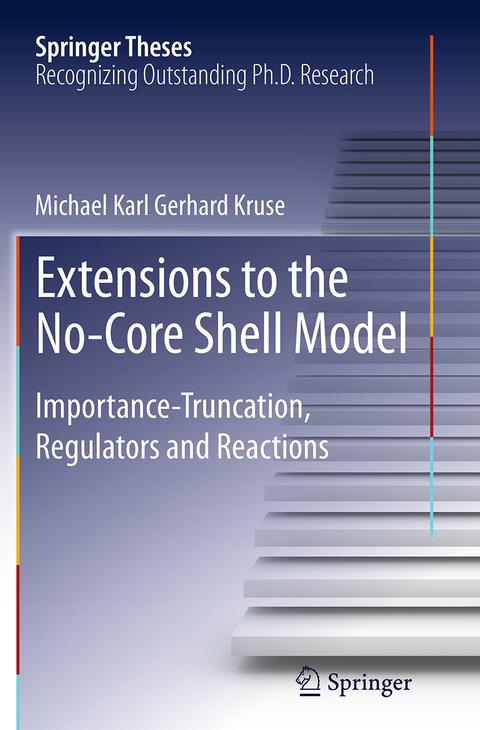
Extensions to the No-Core Shell Model
Springer International Publishing (Verlag)
978-3-319-37581-6 (ISBN)
Extensions to the No-Core Shell Model presents three extensions to the No-Core Shell Model (NCSM) that allow for calculations of heavier nuclei, specifically for the p-shell nuclei. The Importance-Truncated NCSM (IT-NCSM) formulated on arguments of multi-configurational perturbation theory selects a small set of basis states from the initially large basis space in which the Hamiltonian is diagonalized. Previous IT-NCSM calculations have proven reliable, however, there has been no thorough investigation of the inherent error in the truncated IT-NCSM calculations.
This thesis provides a detailed study of IT-NCSM calculations and compares them to full NCSM calculations to judge the accuracy of IT-NCSM in heavier nuclei. When IT-NCSM calculations are performed, one often needs to extrapolate the ground-state energy from the finite basis (or model) spaces to the full NCSM model space. In this thesis a careful investigation of the extrapolation procedures was performed. On a related note, extrapolations in the NCSM are commonplace, but up to recently did not have the ultraviolet (UV) or infrared (IR) physics under control. This work additionally presents a method that maps the NCSM parameters into an effective-field theory inspired framework, in which the UV and IR physics are treated appropriately. The NCSM is well-suited to describe bound-state properties of nuclei, but is not well-adapted to describe loosely bound systems, such as the exotic nuclei near the neutron drip line. With the inclusion of the Resonating Group Method (RGM), the NCSM / RGM can provide a first-principles description of exotic nuclei and the first extension of the NCSM.
Current affiliation: Lawrence Livermore National Laboratory Livermore, CA 94550 USA Research performed at: University of Arizona Department of Physics Tucson, AZ 85721 USA Dr. Michael Kruse completed his Ph.D. thesis in April 2012 at the University of Arizona, USA, and is currently at Lawrence Livermore National Laboratory (LLNL), Livermore, CA, USA. He was twice awarded with the Galileo Circle Scholars award, in 2009 and 2012, which are given by the Galileo Circle at the University of Arizona to the finest undergraduate and graduate science students.
Introduction to Low-Energy Nuclear Physics.- The No Core Shell Model.- Importance Truncated No Core Shell Model.- UV and IR Properties of the NCSM.- Extending the NCSM with the RGM.- Conclusion.
| Erscheinungsdatum | 29.08.2016 |
|---|---|
| Reihe/Serie | Springer Theses |
| Zusatzinfo | XIII, 126 p. 52 illus., 45 illus. in color. |
| Verlagsort | Cham |
| Sprache | englisch |
| Maße | 155 x 235 mm |
| Themenwelt | Naturwissenschaften ► Physik / Astronomie ► Atom- / Kern- / Molekularphysik |
| Naturwissenschaften ► Physik / Astronomie ► Hochenergiephysik / Teilchenphysik | |
| Naturwissenschaften ► Physik / Astronomie ► Quantenphysik | |
| Naturwissenschaften ► Physik / Astronomie ► Theoretische Physik | |
| Naturwissenschaften ► Physik / Astronomie ► Thermodynamik | |
| Schlagworte | Ab-initio Many-body Techniques • Ab-initio Techniques • atomic and molecular physics • Elementary Particles, Quantum Field Theory • Importance Truncation Method • Importance Truncation NCSM • No Core Shell Model • Nuclear Physics, Heavy Ions, Hadrons • Nuclear Structure • Nuclei Calculations • Physics and Astronomy • Quantum Field Theories, String Theory • Quantum physics (quantum mechanics and quantum fie • Resonating Group Method • Statistical Physics |
| ISBN-10 | 3-319-37581-4 / 3319375814 |
| ISBN-13 | 978-3-319-37581-6 / 9783319375816 |
| Zustand | Neuware |
| Haben Sie eine Frage zum Produkt? |
aus dem Bereich


